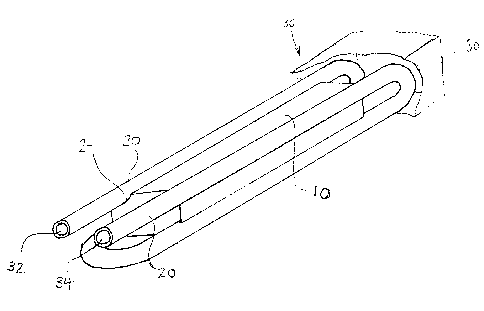Some of the information on this Web page has been provided by external sources. The Government of Canada is not responsible for the accuracy, reliability or currency of the information supplied by external sources. Users wishing to rely upon this information should consult directly with the source of the information. Content provided by external sources is not subject to official languages, privacy and accessibility requirements.
Any discrepancies in the text and image of the Claims and Abstract are due to differing posting times. Text of the Claims and Abstract are posted:
| (12) Patent Application: | (11) CA 2354335 |
|---|---|
| (54) English Title: | FUEL TEMPERATURE CONTROLLER |
| (54) French Title: | REGULATEUR DE TEMPERATURE DE CARBURANT |
| Status: | Deemed Abandoned and Beyond the Period of Reinstatement - Pending Response to Notice of Disregarded Communication |
| (51) International Patent Classification (IPC): |
|
|---|---|
| (72) Inventors : |
|
| (73) Owners : |
|
| (71) Applicants : |
|
| (74) Agent: | NEXUS LAW GROUP LLP |
| (74) Associate agent: | |
| (45) Issued: | |
| (22) Filed Date: | 2001-07-30 |
| (41) Open to Public Inspection: | 2003-01-30 |
| Examination requested: | 2006-07-31 |
| Availability of licence: | N/A |
| Dedicated to the Public: | N/A |
| (25) Language of filing: | English |
| Patent Cooperation Treaty (PCT): | No |
|---|
| (30) Application Priority Data: | None |
|---|
The invention disclosed provides a heat exchanger
apparatus for heating a fuel, which comprises a heat
exchanger block made of a heat conductive material. The
heat exchanger block contains a passageway in which is
located a heating element operative to heat the heat
exchanger block. A fuel conduit in contact with the surface
of the heat exchanger block conducts heat from the block to
the fuel flowing within. The heat exchanger block is shaped
in order to maximize the surface area in contact with the
fuel conduit.
Note: Claims are shown in the official language in which they were submitted.
Note: Descriptions are shown in the official language in which they were submitted.

2024-08-01:As part of the Next Generation Patents (NGP) transition, the Canadian Patents Database (CPD) now contains a more detailed Event History, which replicates the Event Log of our new back-office solution.
Please note that "Inactive:" events refers to events no longer in use in our new back-office solution.
For a clearer understanding of the status of the application/patent presented on this page, the site Disclaimer , as well as the definitions for Patent , Event History , Maintenance Fee and Payment History should be consulted.
| Description | Date |
|---|---|
| Inactive: Agents merged | 2011-07-07 |
| Letter Sent | 2006-09-15 |
| Application Not Reinstated by Deadline | 2006-07-31 |
| Time Limit for Reversal Expired | 2006-07-31 |
| All Requirements for Examination Determined Compliant | 2006-07-31 |
| Request for Examination Received | 2006-07-31 |
| Request for Examination Requirements Determined Compliant | 2006-07-31 |
| Inactive: IPC from MCD | 2006-03-12 |
| Deemed Abandoned - Failure to Respond to Maintenance Fee Notice | 2005-08-01 |
| Application Published (Open to Public Inspection) | 2003-01-30 |
| Inactive: Cover page published | 2003-01-29 |
| Inactive: Correspondence - Formalities | 2002-07-15 |
| Inactive: First IPC assigned | 2001-09-19 |
| Inactive: Filing certificate - No RFE (English) | 2001-08-23 |
| Filing Requirements Determined Compliant | 2001-08-23 |
| Letter Sent | 2001-08-23 |
| Application Received - Regular National | 2001-08-23 |
| Abandonment Date | Reason | Reinstatement Date |
|---|---|---|
| 2005-08-01 |
The last payment was received on 2006-07-31
Note : If the full payment has not been received on or before the date indicated, a further fee may be required which may be one of the following
Please refer to the CIPO Patent Fees web page to see all current fee amounts.
| Fee Type | Anniversary Year | Due Date | Paid Date |
|---|---|---|---|
| Application fee - small | 2001-07-30 | ||
| Registration of a document | 2001-07-30 | ||
| MF (application, 2nd anniv.) - small | 02 | 2003-07-30 | 2003-07-30 |
| MF (application, 3rd anniv.) - small | 03 | 2004-07-30 | 2004-07-30 |
| Request for examination - small | 2006-07-31 | ||
| MF (application, 5th anniv.) - small | 05 | 2006-07-31 | 2006-07-31 |
Note: Records showing the ownership history in alphabetical order.
| Current Owners on Record |
|---|
| AIRCARE INTERNATIONAL, INC. |
| Past Owners on Record |
|---|
| VICTOR J. DIDUCK |